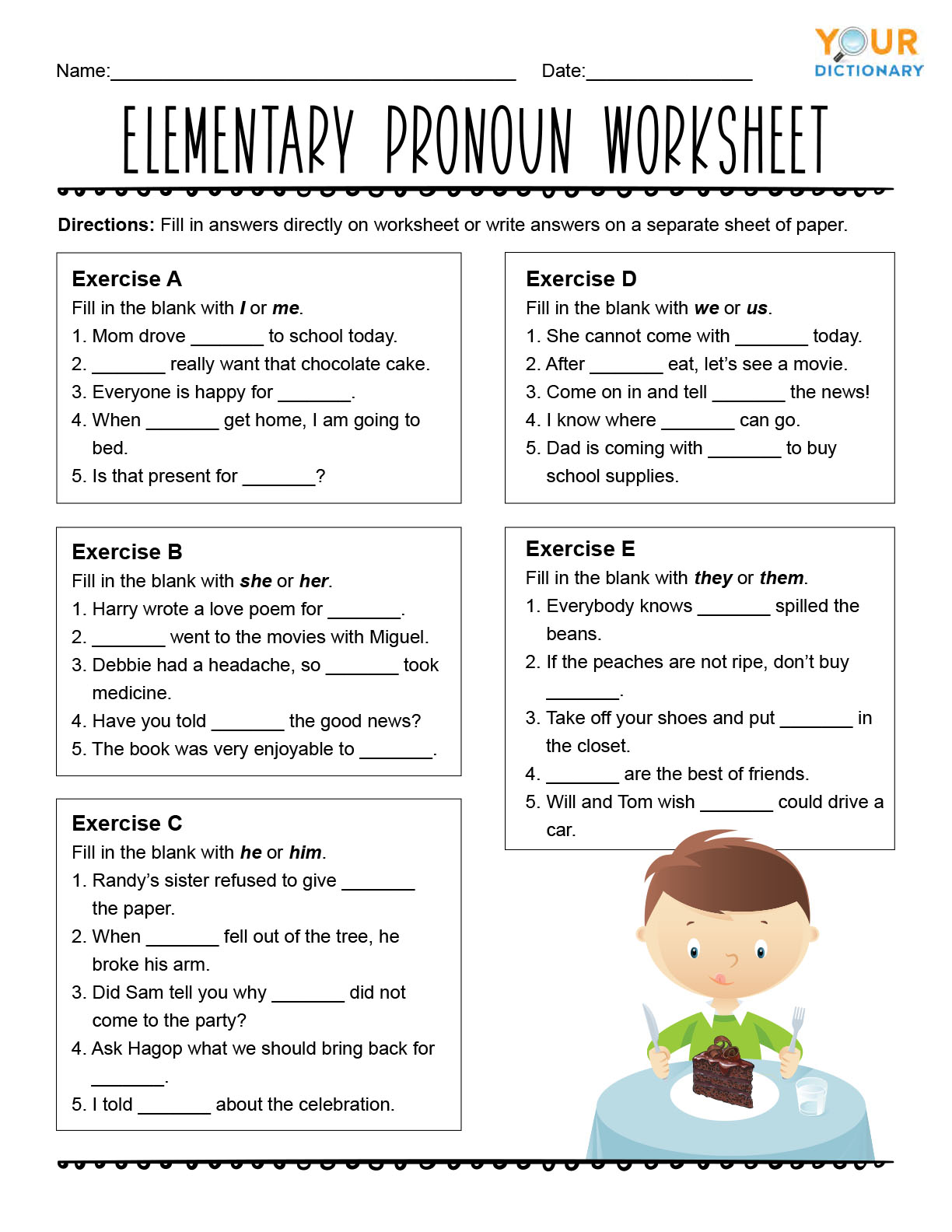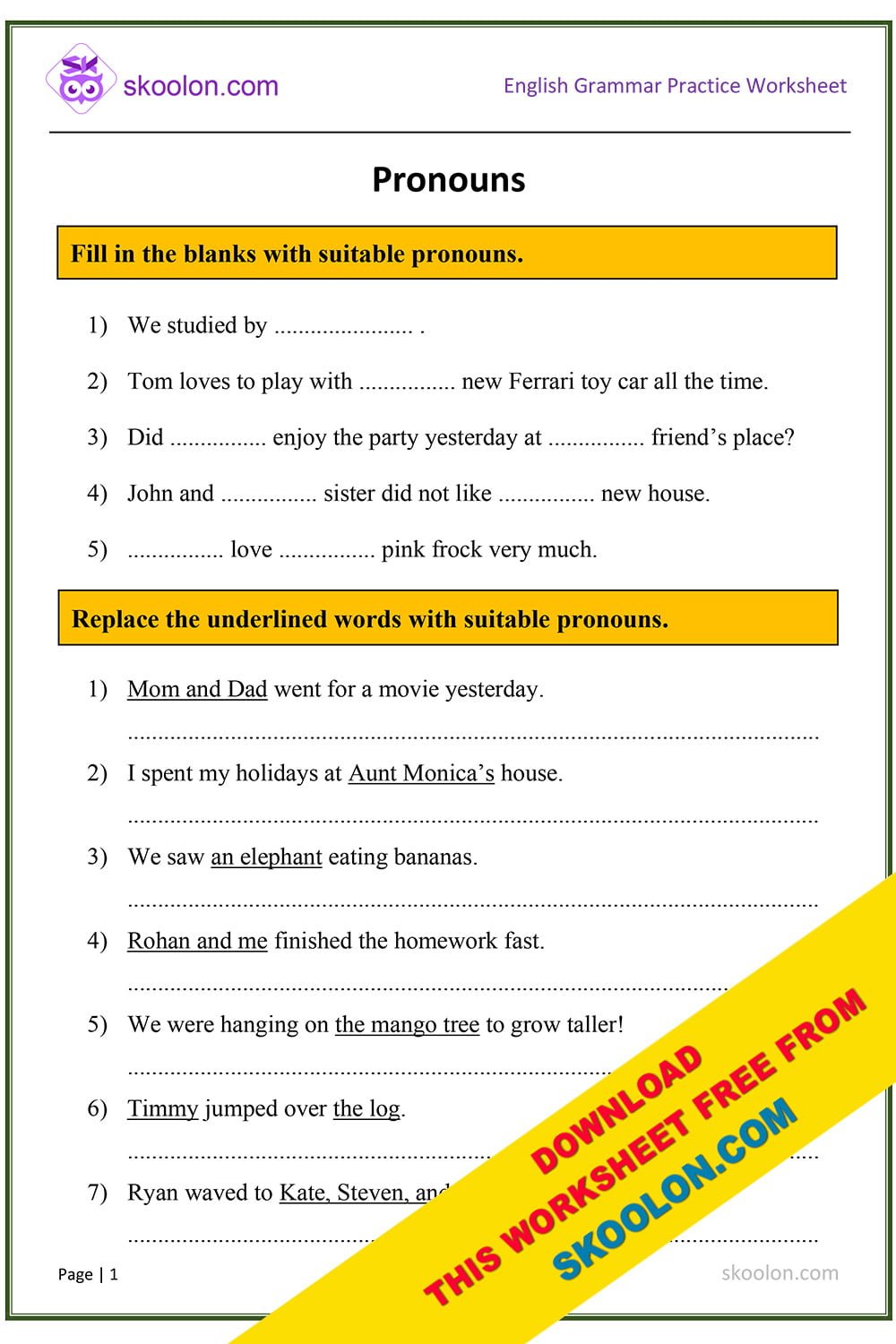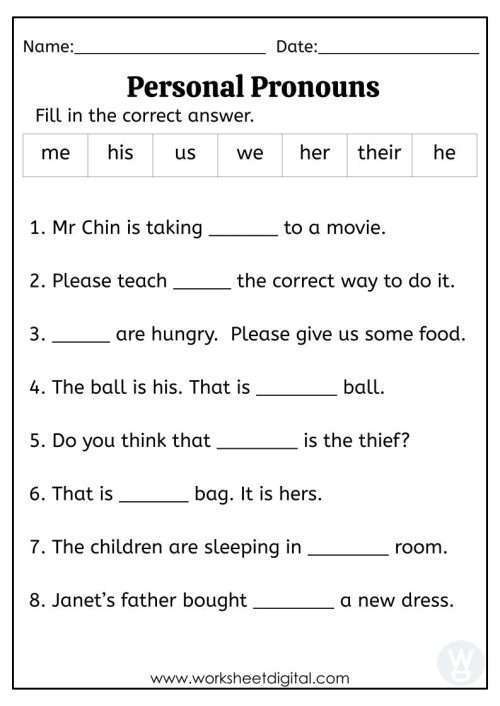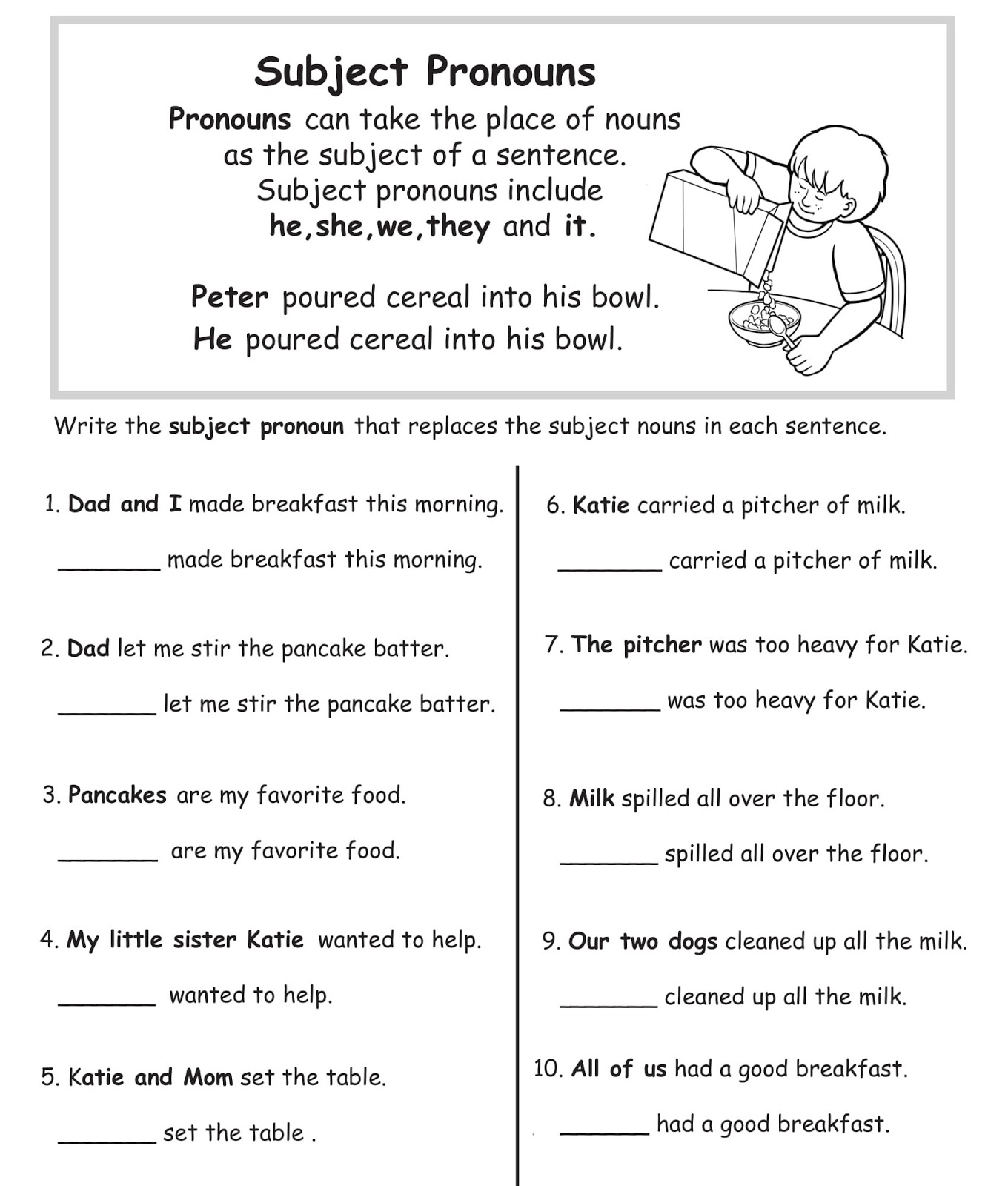
Mastering Pronouns: The Indispensable Role of Grammar Worksheets
English grammar, with its intricate rules and seemingly endless exceptions, can often feel like a formidable challenge for learners of all ages. Among its many components, pronouns stand out as deceptively simple yet profoundly complex. These small but mighty words, which replace nouns to avoid repetition and ensure smooth communication, are fundamental to clear and coherent expression. However, their correct usage – encompassing agreement in number, gender, and case – frequently trips up even native speakers. This is where the strategic implementation of Grammar Worksheets: Pronouns becomes not just beneficial, but truly indispensable.
This comprehensive article will delve into the critical importance of mastering pronouns, explore why well-designed Grammar Worksheets: Pronouns are among the most effective tools for achieving this mastery, and provide insights into creating and utilizing them to their fullest potential.
The Cornerstone of Coherent Communication: Understanding Pronouns

At its core, a pronoun is a word that takes the place of a noun. Imagine trying to tell a story without them: "John went to the store. John bought apples. John came home." It’s clunky, repetitive, and inefficient. With pronouns, it becomes: "John went to the store. He bought apples. He came home." Much better!

However, the simplicity ends there. Pronouns are categorized by type, each with its own set of rules:

-

Personal Pronouns: These refer to specific people or things. They are further divided by case:
- Subjective Case (doer of the action): I, you, he, she, it, we, they. (e.g., She sings beautifully.)
- Objective Case (receiver of the action): me, you, him, her, it, us, them. (e.g., The dog followed him.)
- Possessive Adjectives (show ownership, precede a noun): my, your, his, her, its, our, their. (e.g., Their house is big.)
- Possessive Pronouns (show ownership, stand alone): mine, yours, his, hers, its, ours, theirs. (e.g., That book is mine.)


-

Reflexive and Intensive Pronouns: These end in "-self" or "-selves."
- Reflexive: Reflect the action back to the subject. (e.g., He hurt himself.)
- Intensive: Emphasize the subject. (e.g., I built the table myself.)

-
Demonstrative Pronouns: Point to specific things. (this, that, these, those). (e.g., This is my favorite color.)
-
Interrogative Pronouns: Used to ask questions. (who, whom, whose, which, what). (e.g., Who is coming to dinner?)
-
Relative Pronouns: Introduce dependent clauses, linking them to a noun or pronoun. (who, whom, whose, which, that). (e.g., This is the car that I want.)
-
Indefinite Pronouns: Refer to non-specific people or things. (e.g., everyone, nobody, something, few, many). (e.g., Everyone loves pizza.)
The nuances within these categories – especially concerning subject-verb agreement with indefinite pronouns, distinguishing between "who" and "whom," or ensuring consistent pronoun-antecedent agreement – are common pitfalls. Without proper understanding and consistent practice, communication becomes muddled, and writing loses its professional edge.
Why Grammar Worksheets: Pronouns Are Essential Learning Tools
In an age of digital learning and interactive apps, the humble worksheet might seem old-fashioned. However, its enduring value, particularly for targeted grammatical practice, remains undeniable. Grammar Worksheets: Pronouns offer a unique set of advantages that cater to various learning styles and solidify understanding:
-
Active Learning and Reinforcement: Unlike passive listening or reading, worksheets demand active engagement. Students must apply rules, make choices, and physically write down answers. This process reinforces memory and understanding far more effectively than mere exposure.
-
Targeted Practice: Worksheets can be meticulously designed to focus on specific pronoun types or common error areas. If a student struggles with possessive pronouns, a worksheet can isolate that skill, providing concentrated practice without overwhelming them with other grammatical concepts.
-
Immediate Feedback (with Answer Keys): A well-designed worksheet often comes with an answer key, allowing students to check their work immediately. This instant feedback loop is crucial for self-correction and understanding where errors occurred, preventing the reinforcement of incorrect patterns.
-
Repetition and Mastery: Mastery of any skill, especially in grammar, requires repetition. Worksheets provide a structured way to repeat exercises, reinforcing correct usage until it becomes intuitive.
-
Assessment and Progress Tracking: For educators and parents, worksheets serve as valuable assessment tools. They can quickly identify areas where a student is struggling and track progress over time. This data-driven approach allows for personalized instruction.
-
Reduced Cognitive Load: By presenting grammar concepts in manageable chunks, worksheets reduce cognitive overload. Students can focus on one aspect of pronoun usage at a time, building confidence before moving to more complex applications.
-
Portability and Accessibility: Worksheets are low-tech, requiring only paper and a writing instrument. They can be used anywhere, making them ideal for classroom settings, homeschooling, or independent study.
Designing Effective Grammar Worksheets: Pronouns
The effectiveness of Grammar Worksheets: Pronouns hinges on their design. A well-crafted worksheet is more than just a list of sentences; it’s a carefully structured learning experience. Here are key considerations for creating impactful pronoun worksheets:
-
Clear Instructions: Begin with concise, unambiguous instructions. Students should know exactly what is expected of them for each exercise.
-
Varied Exercise Types: Avoid monotony. Incorporate a mix of activities:
- Fill-in-the-blanks: The most common, where students choose the correct pronoun to complete a sentence.
- Sentence Rewriting: Ask students to rewrite sentences, replacing nouns with appropriate pronouns or correcting pronoun errors.
- Error Identification and Correction: Provide sentences with common pronoun errors and ask students to find and fix them.
- Multiple Choice: Offer several pronoun options for a given blank.
- Matching: Match pronouns to their antecedents or definitions.
- Sentence Creation: Challenge students to write original sentences using specific types of pronouns.
- Paragraph Completion: Provide a paragraph with blanks, requiring students to use a range of pronouns to maintain coherence.
-
Gradual Difficulty: Start with simpler concepts (e.g., subjective vs. objective personal pronouns) and gradually introduce more complex ones (e.g., relative pronouns, indefinite pronoun agreement). This builds confidence and prevents frustration.
-
Contextualized Sentences: Whenever possible, use sentences that are meaningful and relatable. Abstract examples are less engaging than those that reflect real-world situations or interesting facts. Using short narrative passages can also help students understand pronoun-antecedent relationships within a larger context.
-
Focus on Common Errors: Design exercises that specifically target common pronoun pitfalls, such as:
- I vs. Me (when used with another noun: "John and I" vs. "John and me")
- Who vs. Whom
- Subject-verb agreement with indefinite pronouns (e.g., "Everyone is" not "Everyone are")
- Pronoun-antecedent agreement (e.g., "Each student must bring their own book" vs. "Each student must bring his or her own book" or better yet, rewrite to plural: "All students must bring their own books.")
- Reflexive vs. Objective (e.g., "The teacher gave it to John and me", not "John and myself")
-
Include an Answer Key: This is non-negotiable for self-study and allows students to learn from their mistakes immediately.
-
Visual Appeal: While content is king, a clean, well-organized layout with appropriate spacing and clear fonts can significantly improve the user experience.
Implementing Worksheets in Various Learning Environments
Grammar Worksheets: Pronouns are versatile tools that can be effectively integrated into diverse educational settings:
-
In the Classroom: Teachers can use them for individual practice, as warm-up activities, for homework assignments, or even as collaborative group work exercises where students discuss and justify their choices. They are excellent for differentiating instruction, providing extra practice for struggling students or more challenging exercises for advanced learners.
-
Homeschooling: Parents can tailor worksheets to their child’s specific needs and pace. They offer a structured way to ensure consistent practice and identify areas requiring more attention.
-
Self-Study and ESL Learners: Individuals learning English independently or as a second language will find worksheets invaluable for self-paced practice. They provide a clear path for identifying and correcting common errors, building confidence in both written and spoken English.
Beyond the Worksheet: Holistic Pronoun Mastery
While Grammar Worksheets: Pronouns are powerful, they are most effective when part of a broader language learning strategy. To truly master pronouns, learners should also:
- Read Widely: Exposure to correctly used pronouns in books, articles, and other texts helps internalize correct usage patterns.
- Write Regularly: Applying pronoun rules in essays, reports, and creative writing pieces reinforces understanding and highlights areas for improvement.
- Engage in Conversation: Practicing pronoun usage in spoken English, even if initially awkward, helps build fluency and confidence.
- Utilize Interactive Tools: Online quizzes, grammar games, and language learning apps can complement worksheets by providing dynamic, engaging practice.
- Seek Feedback: Whether from a teacher, tutor, or language exchange partner, constructive feedback on pronoun usage is crucial for continuous improvement.
Conclusion
Pronouns, though small, are mighty pillars of the English language, crucial for clarity, conciseness, and flow. Their correct usage is a hallmark of strong communication, and mastering them requires dedicated practice. Grammar Worksheets: Pronouns stand out as an exceptionally effective, versatile, and accessible tool in this pursuit. By providing targeted, active, and repeatable practice, these worksheets empower learners to confidently navigate the complexities of pronoun agreement, case, and antecedent relationships.
From the foundational personal pronouns to the nuanced relative and indefinite types, well-designed Grammar Worksheets: Pronouns offer a structured pathway to mastery. Integrating them into a balanced language learning approach, alongside reading, writing, and speaking, ensures that learners not only understand the rules but can apply them intuitively, ultimately leading to more precise, elegant, and effective communication. The investment in quality pronoun worksheets is an investment in linguistic proficiency that pays dividends across all facets of language use.
